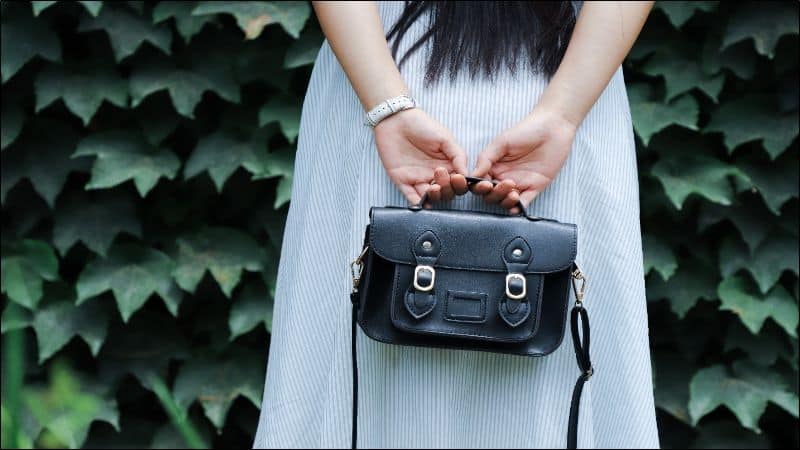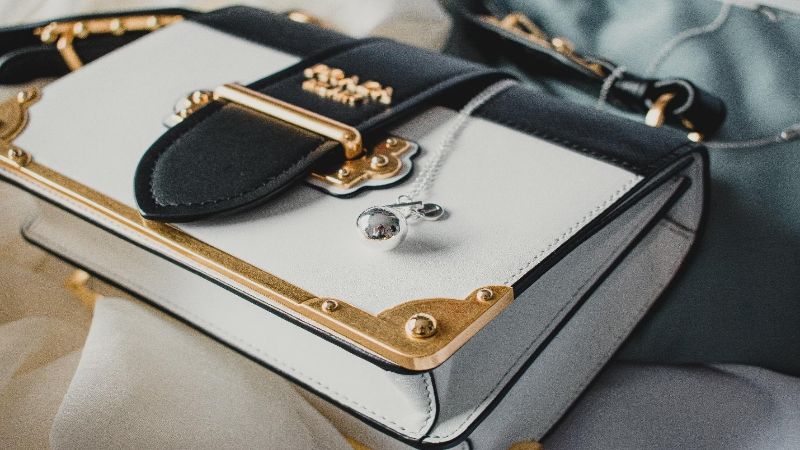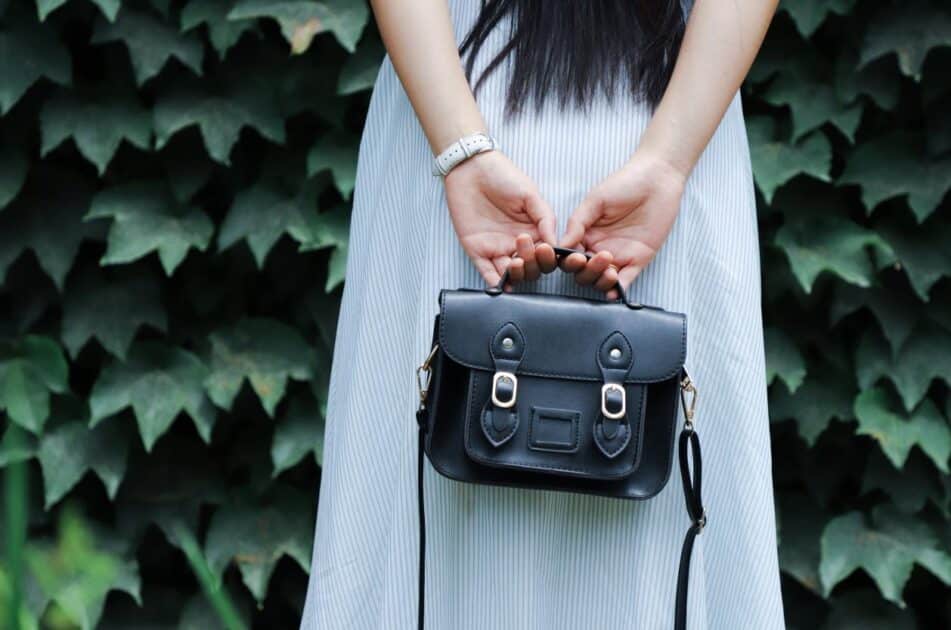Ever found yourself eyeing that perfect purse online but hesitated to click ‘buy’ because you weren’t sure if it’d fit all your essentials? You’re not alone! Measuring a purse before purchasing can save you from a world of regret and returns.
Why measuring a purse is important
When you’re eyeing that stylish purse online, remember: size matters. You’ve got to ensure it complements your frame and holds your day-to-day items. Get the measurements; avoid the guesswork. Here’s why it’s crucial:
Avoid Mismatched Sizes
Ever ordered a purse that looked perfect but ended up being too small or too big? When you measure, you eliminate the chance of a mismatch. Say you need to fit an iPad or a planner inside your purse. Don’t take a chance; check the dimensions to confirm they fit.
Tailor to Your Body Type
A purse isn’t just storage; it’s part of your ensemble. To look on point, you need a purse proportional to your body. Large bags can overwhelm a petite figure, while smaller purses might look lost on a taller frame. Measuring helps you select a size that flatters your stature.
Avert Return Hassles
Returns are a hassle. They waste your time and sometimes, cost you money. When you know the size of the purse you need, you’ll likely nail your purchase the first time. Forget the tedious process of sending items back and waiting for refunds.
Plan Your Use
Understanding a purse’s dimensions gives you a clear idea of its utility. Whether it’s for work, travel, or events, the size dictates how practical the purse will be. Measure to make certain it checks all your boxes.
By measuring your prospective purchase, you’re taking control of your online shopping experience. It’s about being confident that what arrives at your doorstep is exactly what you expected. Remember, a well-chosen purse is a complement to your style, not a compromise. Keep these points in mind and measure up to elevate your fashion game.
Tools you’ll need for measuring
When you’re ready to measure a purse, there are a few key tools you’ll need to ensure accuracy and ease.
A soft measuring tape is indispensable. It’s flexible, which means you can easily wrap it around curves and handles. For length and width, a straight ruler or a yardstick can come in handy, especially for larger bags. Make sure your measuring tools have both inch and centimeter markings; precision matters whether you’re shopping domestically or internationally.
You’ll also need a flat surface. A table or a clear area on the floor can provide the stability you need to lay the purse down and measure it properly. Ensure the area is clean to avoid any damage to the purse.
Keep a notebook and pen nearby to jot down the measurements as you go, or use your smartphone to keep digital notes. Having a record of the purse dimensions will help you compare with online descriptions immediately.
For more complex shapes or compartments, a set of calipers can be useful. They can help you measure thickness or depth more precisely than a tape measure.
If you’re planning to ship the purse or store it, knowing its weight might be beneficial. A small kitchen scale should suffice for this task. Just make sure it’s sensitive enough to register small differences.
Remember, the tools should aid in your purchase, not complicate it. With the right tools at hand, measuring any purse becomes a straightforward task. Keep these items in a small kit, and you’ll always be prepared for your next online shopping session.
Step-by-step guide to measuring a purse
Gather Your Tools – Before beginning, make sure you have your measuring tape, straight ruler or yardstick, flat surface, notebook or smartphone, calipers, and kitchen scale ready. Lay out your purse on the flat surface to ensure accuracy.
Measure the Length – Start by measuring the length of the purse from left to right. Hold the measuring tape or ruler at one end, extend it straight across to the other end, and jot down the measurement.
Determine the Height – Next, find out the height of the purse. Place the measuring tape at the bottom center and measure up to the highest point. If the purse has handles, do not include them in this measurement.
Assess the Width – Measure the width from the front of the purse to the back. For purses that expand, measure at the widest point to capture potential fullness.
Consider the Handle Drop – If applicable, measure the handle drop by gauging the distance from the top of the handles to the top of the purse. This tells you how the purse will hang on your shoulder.
« How to Extend Handbag Strap Easily: Perfect Fit Tips
Restore Gold Hardware on Handbags: Shine Like New with These Pro Tips »
Inspect the Strap Length – For purses with detachable or adjustable straps, extend the strap to its full length and measure.
- Use calipers for detailed parts like clasps or depth of pockets.
- Record all measurements as you go.
- Do a quick check to ensure no dimension has been missed.
- Weigh your purse using the kitchen scale for complete data.
Knowing the precise dimensions will assist you in finding a purse that’s both functional and stylish, reinforcing the notion that preparation enhances your shopping experience.
What measurements to consider
When sizing up your next purse, think beyond basic dimensions. An ideal purse isn’t just about length, width, and height. It’s about how it fits into your daily life.
- Length: The horizontal measurement at the purse’s longest point. It affects how much can be stored lengthwise.
- Height: Measured from the base to the top. It influences how tall items will stand inside.
- Width: The side measurement or the base depth. It determines the purse’s actual thickness.
But it doesn’t stop there.
- Handle Drop: The distance from the top of the handle to the top of the purse. It dictates how comfortably you can swing the bag over your shoulder.
- Strap Length: If it’s a crossbody or shoulder strap, the full length matters for crossbody wear, especially if you’re tall or petite.
For inner compartments, don’t just eyeball them; measure to ensure your essentials fit.
- Inner Pockets: Measuring side pockets helps you know if your phone or wallet fits.
- Zippered Compartments: For security, know the size of these areas to house valuables snugly.
Lastly, don’t forget the hardware.
- Closure: The size of clasp, zipper, or magnet affects how easily you can access your belongings.
- Decorative Elements: They can add bulk or width. Account for these if you’re aiming for compactness.
Remember, numbers tell the real story of fit and function. Your purse should complement your form, fit your fashion, and follow your function. With all dimensions in hand, you’ll find a purse that’s not just an accessory but a trusty sidekick for your daily adventures.
Tips for accurate measuring
When you’re after precision in measuring your purse, every detail counts. You’ll want to ensure that your method is as meticulous as your style.
Work on a Flat Surface
To start, clear a flat surface. You don’t want any objects underneath skewing your numbers. Lay the purse flat, and smooth out any wrinkles or bulges; they can distort measurements.
Double-Check Measurements
Measure twice or even thrice. Writing down incorrect dimensions is frustrating and can be avoided by a simple recheck.
Measure in Natural State
Avoid stretching or distorting the purse while measuring. For the true size, let it rest in its natural, unstuffed state.
Note the Shape
Remember that certain purse shapes require a more tailored measuring approach. A clutch verses a tote, for instance, has its own set of measuring considerations. Adjust your technique to the purse’s design.
Consistent Units
Consistency is key. If you start measuring in inches, continue in inches. Switching between units can cause confusion and inaccuracy.
Consider Practical Use
How you use your purse might influence certain measurements. For instance, if you tend to overfill, give a bit of leeway to the width.
Use Appropriate Tools
Don’t use a ruler where a measuring tape is more appropriate, and vice versa. Curves and straight edges require different tools for accuracy.
Document Immediately
To avoid forgetting, jot down your measurements as soon as you take them. Use your smartphone or notebook for quick documentation.
Check Hardware Size
Don’t overlook hardware. Buckles and clasps can add to the overall dimensions and impact the purse’s fit and functionality.
Keeping these tips in mind will help ensure that your purse measurements are as precise and practical as your fashion choices. Remember, it’s not just about numbers—it’s about finding the perfect accessory for your unique style.
Conclusion
You’ve now got the know-how to measure your purse like a pro! Remember, accuracy is key to finding that perfect bag that’s not just a fashion statement but also a functional accessory. Keep your measuring tape handy and don’t shy away from rechecking those numbers. Whether it’s for online shopping, organizing your bags, or simply satisfying your curiosity, your new skills will serve you well. So go ahead, grab that purse you’ve been eyeing, and measure away with confidence!
Frequently Asked Questions
What tools are needed to measure a purse accurately?
To measure a purse accurately, you will need a measuring tape, a ruler, a flat surface to work on, a notebook or smartphone for recording measurements, calipers for detailed sections, and a kitchen scale for weight.
How do you measure the length of a purse?
The length of a purse is measured from one side to the other at the longest point. Lay the purse on a flat surface and use a measuring tape or ruler to determine the length.
What is handle drop and how is it measured?
Handle drop is the distance from the top of the handle to the top of the purse body when hung. Measure the handle drop by using a measuring tape from the peak of the handle down to the opening of the purse.
Why is it important to measure the strap length of a purse?
Measuring the strap length is important to ensure that the purse can be carried comfortably over your shoulder or body. The length of the strap can determine how the purse fits and drapes against the body.
Can calipers be used for measuring a purse?
Yes, calipers can be used for measuring detailed parts of a purse where precision is crucial, such as clasps, closures, and decorative elements.
Should measurements be taken when the purse is full or empty?
Measurements should be taken when the purse is empty and in its natural state to get accurate dimensions of its actual size.
What tips are given for accurate purse measuring?
For accurate purse measuring, work on a flat surface, double-check measurements, measure the purse in its natural state, consider its shape, use consistent units, think about practical use, use the right tools, document measurements immediately, and check the size of hardware.











